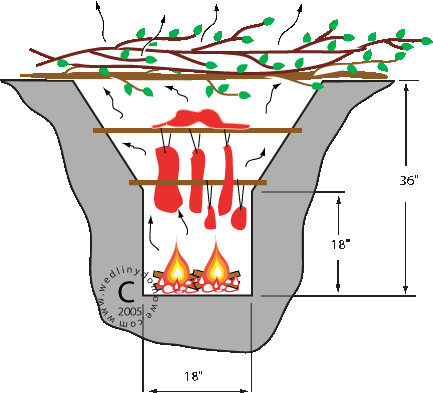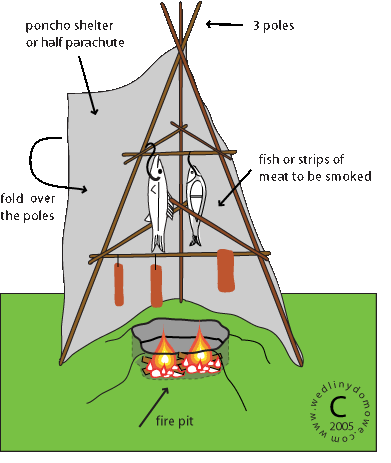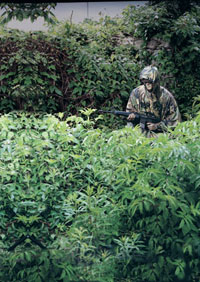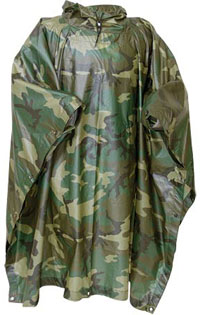Meats and Sausages
Survival Smokers
The following information comes from the US Army Survival Manual
If the situation and time allow, you should preserve the extra meat for later use. If the air is cold enough, you can freeze the meat. In warmer climates, however, you will need to use a drying or smoking process to preserve it. One night of heavy smoking will make meat edible for about 1 week. Two nights will make it remain edible for 2 to 4 weeks. To prepare meat for drying or smoking, cut it with the grain in one-quater inch strips. To air dry the meat, hang it in the wind and hot sun out of the reach of animals; cover it so the blowflies cannot land on it.
To smoke meat, you will need an enclosed area, for instance, a teepee or a pit. You will also need wood from deciduous trees, preferably green. Do not use conifer trees such as pines, firs, spruces, or cedars, as the smoke from these trees gives the meat a disagreeable taste. When using the parateepee or other enclosed area with a vent at the top, set the fire in the center and let it burn down to coals, then stoke it with green wood. Place the strips of meat on a grate or hang them from the top of the enclosure so that they are about 2 feet (61 cm) above the smoking coals.
To use the pit method of smoking meat, dig a hole about 3 feet (1 meter) deep and 1 1/2 feet (1/2 meter) in diameter. Make a fire at the bottom of the hole. After it starts burning well, add chipped green wood or small branches of green wood to make it smoke. Place a wooden grate about 1 1/2 feet (1/2 meter) above the fire and lay the strips of meat on the grate. Cover the pit with poles, boughs, leaves, or other material.

Properly smoked meat will look like a dark, brittle, curled stick. It is tasty and nutritious. If mold forms on the meat, brush or wash it off before eating the meat. In damp weather, you will have to redry smoked or air-dried meat to prevent molding. You can also use saltwater to help preserve meat. Soak the meat in saltwater, then dry it in the sun or over fire. The meat can spoil if too little salt is used or if it is dried improperly.




















